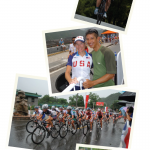I tried to remain upbeat, explaining that his condition was due to an aberrant immune response that needed to be suppressed, not by antibiotics, but by using immunosuppressive drugs. Because none had been tried, there was hope that his reactive arthritis could be tamed if not cured.
Then Brett dropped the bombshell. He had a lifelong dream that required that he get healthy in a hurry. He was a crew member of one of the famed Newport sailboats that was going to compete for Olympic gold in Sydney, Australia, a mere 12 weeks away. This was not going to be easy. We had our work cut out for us.
Recipe for Success
Reaching the pinnacle of elite athletic achievement requires so many variables to be perfectly aligned. Does the athlete have the mental toughness to endure the untold hours of training, frequent misery and considerable personal sacrifice? Physicians may find no story more endearing than the tale of noted British neurologist Sir Roger Bannister, who qualified as a doctor the same year (1954) that he broke the four-minute mile, a barrier that no runner had previously broken. Despite the worldwide acclaim, he was afraid his medical colleagues would not take him seriously and that his athletic recognition would get in the way of his career. Over the years, he downplayed his remarkable athletic achievement and when invitations came to attend major sporting events as an honored guest, including the 1964 Olympics in Tokyo, he quietly declined.1
Toughness aside, an athlete must stay healthy. Countless careers have been derailed by the development of a musculoskeletal issue, some seemingly trivial and others quite serious. Tears of the menisci, muscle, tendons, ligaments, labra and fascia, the body’s framework, can dispatch the athlete to the sidelines, often permanently (see “Connective Tissue Disorders Lack Societal Concern, Financial Support,” The Rheumatologist, September 2015).
Although their physical prowess and sporting accomplishments often make us forget their vulnerabilities, athletes can become ill. Perhaps the greatest example of a career-ending illness was the diagnosis of amyotrophic lateral sclerosis (ALS) that forced Lou Gehrig of the New York Yankees to end his streak of 2,130 consecutive baseball games played. A powerful hitter, Mr. Gehrig had mysteriously lost his ability at the plate. His batting statistics plummeted, and his strong base running declined overnight. An admission to the Mayo Clinic confirmed the diagnosis of ALS, forcing him to retire at the age of 36. Mr. Gehrig died just two years later.2


